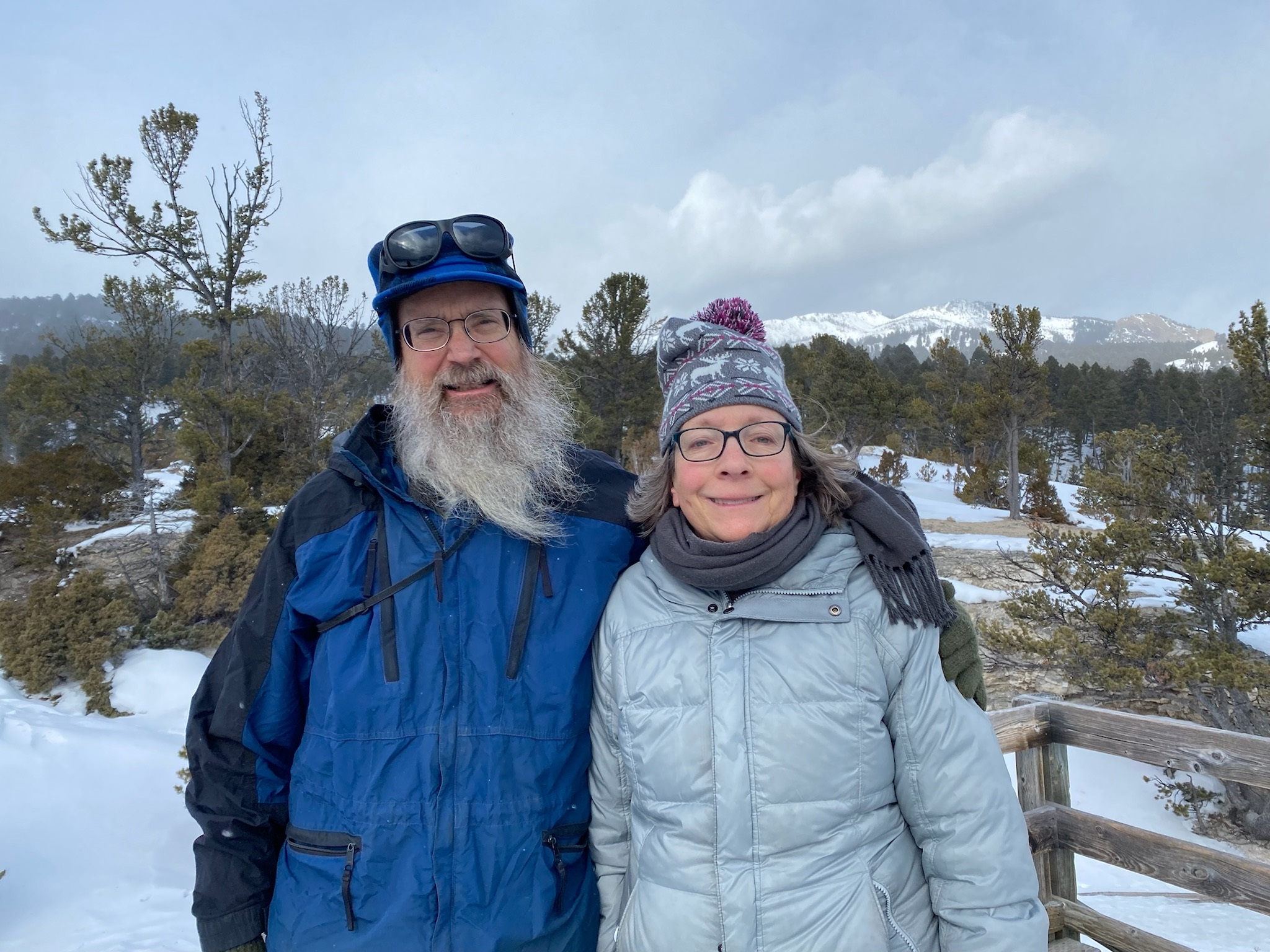NMT Alumni Spotlight
|
Margaret "Peggy" Barroll |
|
Hydrologist Launched a Career Here, and Now Gives Back By Jay Ann Cox When Margaret “Peggy” Barroll was shopping for graduate programs, she looked long and hard at schools with support for teaching or research assistants. Additionally, having spent many years back east, she knew she wanted to be in the Southwest to do geoscience or geophysics. In this area, after all, “you can actually see the rocks,” she said with a smile. Back east, geology professors take their students out where the road works have carved into the geologic features, “and there you can see an anticline, for example.” The Southwest held much better promise for Peggy’s interests. When she arrived at New Mexico Tech in 1982, the geophysics department was headed by Dr. Allan Sanford, who arranged support for Peggy as a teaching assistant in introductory physics labs. Later, she worked with Dr. Marshall Reiter at the NM Bureau of Geology and Mineral Resources as a research assistant. Reiter studied heat flow, and Peggy developed a keen interest in how water pushes the heat around under the surface. For her degree program, she took many hydrology classes and emerged from Tech as a hydrologist (M.S. 1985 and Ph.D. 1990). Most of her career has been doing data analysis and computer modeling of groundwater and water resources. Initially Peggy went to work for Dan Stephens and Associates, a hydrology company started by Dan Stephens, a Tech professor who employed many Tech students over the years. At that time her work centered on modeling groundwater contamination and the question, “Where is it [the contamination] going to go and how fast will it get there?” Next Peggy went to work at the New Mexico Office of the State Engineer on water resource problems. What will happen “if people pump this much water from wells, how fast are the groundwater levels going to go down, and how much water is going to be pulled out of the river?” These findings are important to several different groups— irrigation districts, farmers, developers, and environmentalists. Much more than science goes into these complex issues. Peggy said, “It’s fascinating because there’s the scientific part, always an historical part, and then there’s the legal part.” The background and research is “a mixture of very interesting stuff, and people who are fighting about water are very passionate about it.” When it comes to water wars, she researches files as far back as 100 years, often finding that water users were fighting about the same issues back then. It’s something, Peggy says, that people who haven’t been in the desert for very long have a hard time comprehending. She recalled a time when she was giving a field presentation at a conference in Albuquerque. “There were people there that had just flown in from Michigan. We are next to the Rio Grande, and I’m trying to explain to them that the water in that river there is all that most of the population in New Mexico has. They can pump water out of the ground but it ends up coming from that stream.” Peggy adds, “I don’t think they got it. I think that it’s hard to imagine living in Michigan or Minnesota… where water falls from the sky.” One of the biggest New Mexico water issues in recent years is the Lower Rio Grande and the water held in the Elephant Butte Reservoir - how that water is used and how that water is distributed between New Mexico and Texas. Farmers in both states use water from Elephant Butte, and also pump groundwater to supply their crops. The same water must also supply growing municipalities such as Las Cruces and El Paso. “Texas had complained for years that New Mexico water users were pumping too much water from wells, and that not enough water was getting to Texas.” “It has been a controversial issue for years, and in 2013, Texas filed suit, arguing that New Mexico was in violation of the interstate Rio Grande Compact. I’ve been working on that case on behalf of New Mexico.” Because the lawsuit involves a dispute between states, it is handled by the U.S. Supreme Court. At press time, Texas, New Mexico and Colorado had arrived at a settlement, but the federal government is objecting to it. “It’s still in court, and we are probably going to argue in front of the U.S. Supreme Court this winter or next spring…. It’s interesting and I got lucky (to be able to work on a Supreme Court lawsuit) with really great people.” Peggy is a donor to New Mexico Tech for one simple reason – she was helped when she started. “It’s a good school with great professors, and it’s a relatively inexpensive place to get a degree… and I want to help other people.” Peggy’s donations support the Stephen Wells Bright Star Scholar Program at the Bureau of Geology & Mineral Resources. Through this scholarship, undergraduates can apply for a paid internship and be mentored by one of the research scientists. “New Mexico Tech has produced a lot of great geologists and hydrologists over the years…. I want to give back (so) other students studying geoscience can work on these problems.” Peggy is semi-retired but continues to work on the Rio Grande litigation. She and her husband Hans Hartse, a Tech alum now retired from LANL, live in Santa Fe, New Mexico. |
